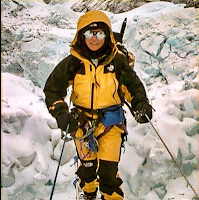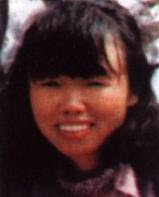Assignment 2: Responding to Literary Criticism
QUEEN GERTRUDE: MONARCH, MOTHER, MURDERER
By: Harmonie Loberg
1. What was your author's thesis?
“I suggest that, within this context of prevalent indirect aggression and with the aid of recent behavioral research, we need to consider anew the textual evidence that Ophelia's "drown- ing" is not the result of an accident or of suicide” (Loberg).
The author’s thesis entails that the play Hamlet presents a great deal of insight into how psychologically humans treat each other. Individuals tend to unintentionally direct forms of violence to others like framing, poisoning, spreading lies, etc. This insight has shown that the Queen had zero fingers pointed at her because she used non-aggression violence.
- Did she provide convincing evidence to support her thesis? If yes, then provide an example and explain why it was convincing. If no, then provide an example and explain why it wasn't convincing.
Yes, Loberg did provide a significant amount of evidence that supported her thesis. The most insightful assumption was defiantly when Loberg explained how strange it was that the Queen knew about Ophelia’s death before the King. “The fact that the Queen delivers notice of Ophelia's death is highly suspicious. Given the interruption of Hamlet's letters and Claudius' words of implication, it is no wonder that the drowning report has drawn such attention —this scene seems primarily constructed to heighten suspicions of the Queen's involvement in Ophelia's death” (Loberg). It makes me wonder was there a servant that even witnessed the death of Ophelia or was the Queen just making it up. When connecting this example back to the thesis it becomes apparent that there are many underlying suspicions about the Queen that haven’t yet been answered in today’s era. Another example is when Hamlet was banished because he murdered of Polonius. The passive murders were never punished and were usually rewarded in some form. For example, after Claudius murdered King Hamlet he was rewarded with the crown. All of these examples support Loberg’s thesis that obvious aggression will most likely to face consequences.
- Using one example, identify how the author used a direct quotation:
“According to Kaj Bjorkqvist, a pioneer in the field of human aggression, the development of social and verbal skills allows for "sophisticated strategies of aggression," "with the aggressor being able to harm a target person without even being identified: Those strategies may be referred to as indirect aggression” ("Sex Differ- ences," 179).”
a) Is the quotation from a primary or secondary source?
This quotation is from a secondary source. “Secondary sources describe, discuss, interpret, comment upon, analyze, evaluate, summarize, and process primary sources”. Since this quotation is from a novel it would be considered a secondary source that could have evolved from a primary source.
b) Is the quotation used to illustrate a point, provide clarification, or just to identify a part of the play?
I believe this quotation is placed in this reading in order to provide credible proof and clarification on human aggression.
c) Does the author use an entire sentence, or just part of the sentence?
Loberg used an entire sentence for this instance, but in many cases, she used sentence fragments throughout the essay.
d) Is the quotation incorporated into one of the author's sentences?
This sentence is not incorporated into the author’s sentences but is linked to the other sources before and after it.
e) How do the parenthetical citations for Hamlet differ from those of the secondary sources?
The parenthetical citations that are seen in Hamlet are different because they have brackets at the end with the act, scene, and line(s) numbers. Whereas citations from secondary sources generally blend into the writing because it’s usually the last name of the author and the page number.
4. Was there anything confusing in the essay that you feel you would need additional information to understand? If so, what?
No, I found that the essay was not confusing at all. Instead, I would consider it to be very strong and easy to follow considering Hamlet is a very difficult read. 5. Identify at least two key ideas or terms from either archetypal or feminist literary
criticism your author used.
Terms that I came across:
“Misogynistic critics”
"intelligent, penetrating, and gifted with a remarkable talent for concise and pithy speech"
"the nurtur- ing, loving, careful mother and wife—malleable, submissive, totally dependent, and solicitous of others at the expense of herself"
“The need to secure her roles as monarch, mother, and wife seems the primary catalyst in her decision.”
“Feminist”
6. What did this particular perspective add to your understanding of Hamlet?
I found that this essay really changed my views on Gertrude. Considering our class didn’t read through the whole play, I never came across the little hints that Gertrude could have been involved in Ophelia’s death. Additionally, I never really understand why Ophelia died. In this essay the expert theories helped me understand it was something more than an accident or suicide. I also never saw a difference in the types of aggression. Now, with the use of examples in the essay I am more aware of indirect aggression and direct aggression.
7. Did you notice anything about the way in which this essay was written that
seems to contradict essay “rules” you have been taught in the past? If so,
explain.
I found that the ideas were scrambled everywhere. I found was hard to spot the specific topics/arguments because of the lack of organization. Usually, essays follow a chronological order but in this essay the ideas go from the final scene, to the murdering of King Hamlet, and then to the Queen’s involvement in Ophelia’s death. I also noticed that the author does not maintain a certain point of view. At one moment it would say “I believe in” then later it would say “In her star- tling-yet-necessary”.
Works Cited
Loberg, Harmonie. "Queen Gertrude: Monarch, Mother, Murderer." Atenea24.1 (2004): 59-71. Literary Reference Center. Web. 7 June 2017.
Primary and Secondary Sources. N.p., n.d. Web. 07 June 2017. <https://library.ithaca.edu/sp/subjects/primary>.






